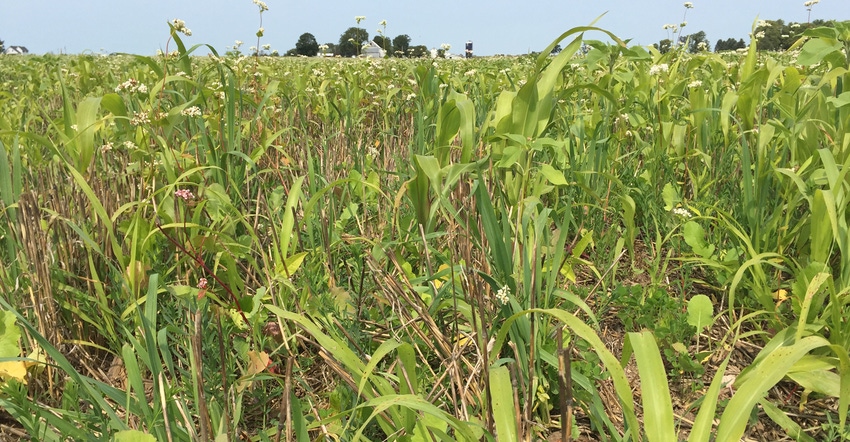July 19, 2022

One of the major challenges with cover crops is planting them after harvest, especially if the fall tends to be wetter than normal. A wet spring can also delay crop planting, which will likely push back harvest. For many people in Indiana, 2022 was a wet spring, and planting was delayed.
Sometimes it comes down to a matter of priorities in the fall as harvest winds down. For many, it seems there is time for fall tillage, lime and fertilizer application, and even fall herbicide application. However, cover crop planting tends to take a back seat on many farms.
If you want your cover crops to be successful, they must climb into the front seat, and maybe grab the steering wheel to take control of your fall activities.
Early seeding benefits
The sooner you can get cover crops planted in the fall, the more choices you will have when it comes to species selection and the more fall growth you will get. This is especially important if your mix contains species that die over winter due to cold temperatures. For these species, you want to optimize fall growth to get the desired return from the investment in cover crop seed. Throughout much of Indiana, species selection is reduced to cereal rye or triticale by mid-October.
Seed-to-soil contact is vital with cover crops, just like it is with any kind of seeding. So, drilling cover crop seed, planting with a precision planter, lightly incorporating with a vertical-tillage tool using a seeder on the tool, or tilling after spreading seed combined with fertilizer will improve germination and fall growth, especially if it is dry.
Download Now: In-depth cover crop guide available
The later the seeding date or the drier the soil conditions, the more important drilling seed becomes. Generally, you will get better seed-to-soil contact and have more available moisture when you drill cover crops.
If you must plant overwintering cover crops such as cereal rye late in the fall, it can be beneficial to allow them to grow longer in the spring to achieve more root growth and a higher carbon-to-nitrogen ratio in the top growth. This extra growth will provide longer-lasting soil mulch throughout the growing season and will also provide better weed control, plus more noticeable moisture and temperature control benefits later in the season.
Cereal rye can germinate in temperatures as low as 34 degrees F. It is usually one of the first cover crops to break dormancy and start growing in the spring.
Advice for first-timers
Are you thinking about planting cover crops for the first time this fall? Take some time to do your due diligence. Do your research, talk to local farmers who use cover crops and talk to your local seed dealer. Make sure you will be satisfied with the results from your cover crop dollar.
If you have questions about getting started using cover crops, contact your local soil and water conservation district or Natural Resources Conservation Service office. Some counties may offer programs that provide cost-share if you are trying cover crops for the first time.
Donovan is a district conservationist with the NRCS. He writes on behalf of the Indiana Conservation Partnership.
About the Author(s)
You May Also Like






